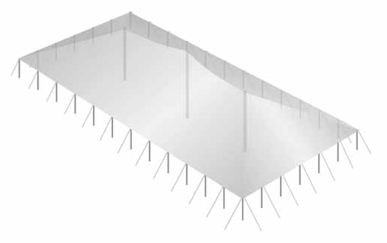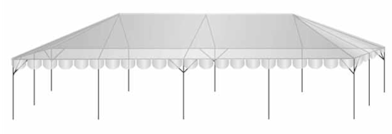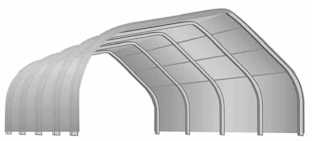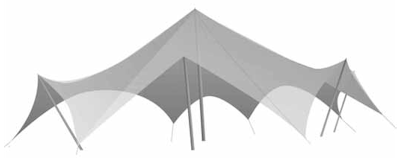
A tent that features a set of individual poles arranged beneath the fabric roof to support and define the shape of the structure.
The fabric roof is tensioned over the poles and attached to ropes and/or cables at designated spots around the fabric’s edge. The ropes/cables are anchored to the ground using stakes, augers or weights around the perimeter of the tent. Also referred to as a “push-pole tent.”
The main advantage of a pole tent is typically the cost; however count on longer set-up time.


